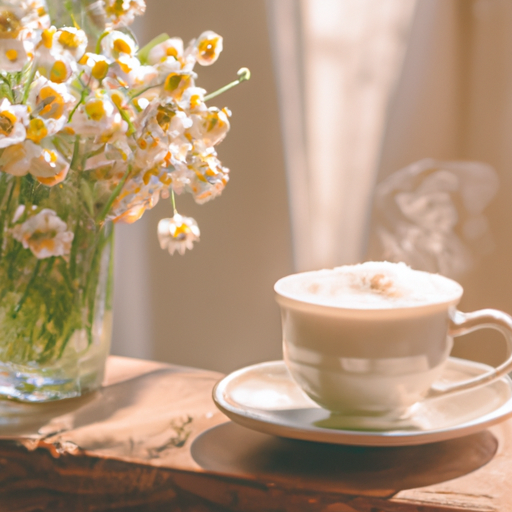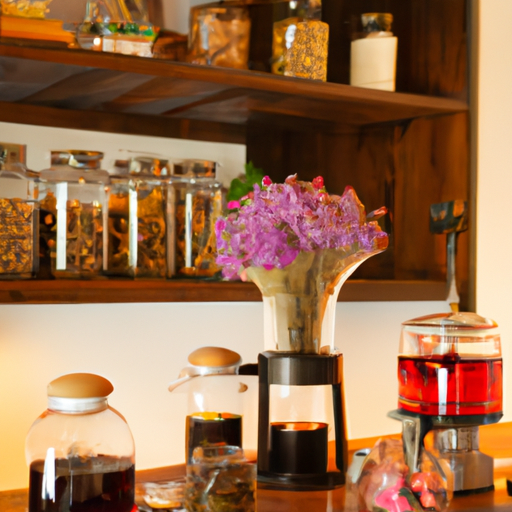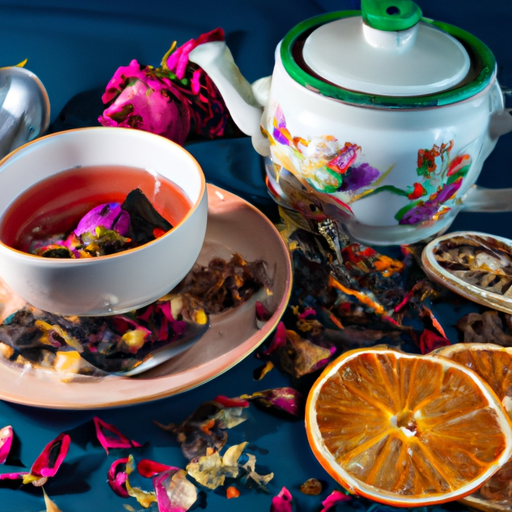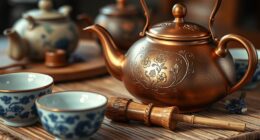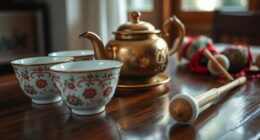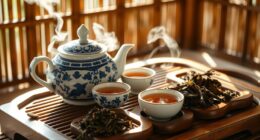Are you prepared to dive into the captivating realm of tea? Come along as we discover the art of brewing tea, from beginners to connoisseurs.
In this comprehensive guide, we will delve into the art of brewing tea, exploring the techniques and traditions that have captivated tea enthusiasts for centuries.
From the moment we transition from tea bags to the exquisite realm of loose leaf tea, we will witness the dedication of tea masters in Asian cultures, who spend years perfecting their craft.
Together, we will unravel the basic steps of brewing loose leaf tea, uncovering the nuances between Gongfu (Eastern) brewing and English (Western) brewing.
We will discover the pivotal role of water, learning the importance of temperature and brewing times for different types of tea.
Embracing the spirit of experimentation, we will explore optional flavorings and the transformative power of tea in drinks and cooking.
So, come with me and let us embark on this delightful journey of discovery and mastery.
Key Takeaways
- Brewing tea is a skill that can be learned and perfected over time, with tea masters in Asian cultures studying for years to master the art.
- Transitioning from tea bags to loose leaf tea opens up a new world of tea options and allows for experimentation and enjoyment in the brewing process.
- Water temperature and brewing times vary for different types of tea, and using good quality water is important for achieving the perfect brew.
- There are different brewing methods, such as Gongfu brewing and English brewing, and the size of tea leaves can affect brewing time and the amount of tea used.
The Basics
I’ve learned that brewing tea involves several basic steps. These include transitioning from tea bags to loose leaf tea, using good water, adjusting water temperature and brewing times based on the type of tea, and experimenting with different flavors and enhancements.
When it comes to loose leaf tea for beginners, there are a variety of options to explore. From delicate green teas to robust black teas, each type offers its own unique flavor profile and health benefits.
Drinking tea has been linked to numerous health benefits, including improved digestion, increased antioxidant intake, and reduced risk of heart disease. Whether you’re looking to relax with a soothing herbal infusion or boost your energy with a vibrant green tea, exploring the world of loose leaf tea is a journey that can be enjoyed by both beginners and tea enthusiasts alike.
Different Brewing Techniques
With a touch of finesse and a sprinkle of magic, one can unlock the secrets of tea mastery by exploring the myriad of brewing techniques available.
Tea infusers play a crucial role in the brewing process, allowing the tea leaves to unfurl and release their flavors. Different infusers offer unique experiences, from the convenience of a mesh ball infuser to the elegance of a glass teapot with a built-in strainer. Each infuser imparts its own charm to the tea, enhancing the overall enjoyment.
Choosing the right teapot is equally important. A porcelain teapot preserves the delicate flavors of green and white teas, while a clay teapot enhances the richness of oolongs. A cast iron teapot provides a traditional touch and retains heat well, perfect for brewing robust black teas. The right teapot elevates the experience, making tea brewing a delightful ritual.
So, embrace the variety of tea infusers and teapots available, and let the journey to tea mastery begin.
Tips and Tricks
One helpful tip I’ve discovered is to preheat the teapot or mug before adding the tea leaves, as it helps to maintain the optimal brewing temperature. This is especially important when using delicate teas that require lower water temperatures. By preheating the teapot or mug, you ensure that the water stays hot throughout the brewing process, allowing the tea leaves to release their flavors fully.
Another tip is to invest in high-quality tea brewing equipment, such as a good tea infuser or a teapot with a built-in strainer. These tools not only make the brewing process easier but also enhance the overall tea drinking experience. They allow the tea leaves to expand fully and infuse the water evenly, resulting in a more flavorful and enjoyable cup of tea.
Frequently Asked Questions
What is the best type of water to use for brewing tea?
The best water to use for brewing tea is filtered or spring water. It is important to use water at the correct temperature, as different types of tea require different temperatures for optimal flavor extraction.
How do you determine the appropriate amount of tea leaves to use?
To determine the appropriate amount of tea leaves, I recommend using the weight measurement technique instead of teaspoons. On average, the recommended ratio is 2-3 grams of tea leaves per 8-ounce cup, but it may vary based on personal preference and tea type.
Can you reuse tea leaves for multiple brews?
Yes, tea leaves can be reused for multiple brews. By adjusting steeping techniques, such as increasing steeping time or water temperature, you can extract different flavors from the leaves. Experimentation is key to finding the perfect balance.
What are some common mistakes to avoid when brewing tea?
Steeping for too long and using water that is too hot are common mistakes in tea brewing. To avoid this, follow proper steeping times for different types of tea and use the appropriate water temperature.
Are there any health benefits associated with drinking tea?
Drinking tea offers numerous health benefits. Different types of tea provide specific advantages, such as green tea for weight loss, black tea for heart health, and herbal teas for relaxation and digestion.
Conclusion
In conclusion, brewing tea is a journey that anyone can embark on, from beginners to masters. By transitioning from tea bags to loose leaf tea and exploring different brewing techniques, one can truly become a tea connoisseur. Additionally, by experimenting with flavors, individuals can discover the endless possibilities that await in the world of tea brewing. While some may argue that brewing loose leaf tea is time-consuming, the rich and complex flavors that can be achieved are well worth the effort.
So, why not take a leap into the world of tea brewing and discover the endless possibilities that await?



